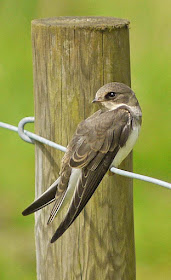I picked up this delightful children's natural history book in a second-hand book shop a few years ago. Country Walks of a Naturalist with his Children was written by the Reverend William Houghton and published by Groombridge and Son of Paternoster Row, London in 1870. He was rector of Preston-on-the-Weald in Shropshire and his real passion was for studying fish, becoming a Fellow of the Linnaean Society as a result of his expertise, but I suspect that this was by far his most popular and most satisfying work. My edition, with this attractive embossed cover, was the 5th., published in 1880.
You can read the book online at www.gutenberg.org/ebooks/23941
This is the frontispiece, showing Houghton and his children on a nature ramble. Part of the charm of the book is the unusual way in which it is written, in the first person, as conversation between parent and child on a nature walk. The language seems contrived to a modern reader, but would not have seemed so at the time.
Each chapter is a separate walk, the first in April and the last in October.
In the first sentence of his preface Houghton declares 'In this little book my desire has been, not so much to impart knowledge to young people, as to induce them to acquire it for themselves' and that is exactly what transpires in the following chapters; the children find things, ask him questions about them and he answers their questions, telling them about the lives of the things they have seen.
This process of real-life discovery, followed by questions and discussion between parent and child, must surely be the best way for children to learn about nature; solitary, didactic television or computer-based technologies simply can't compete, however stunning the imagery and graphics might be. Kids love to talk, discuss and ask questions about the things that they find.
When it comes to illustrations,then of course these old Victorian natural history books leave a great deal to be desired, with their monochrome wood engravings, but when it comes to the textual content the book is on a different plane to modern natural history books for children.
Firstly, it includes organisms that many modern natural history books for children ignore, like this tiny hydra clinging to duckweed roots. It discusses wonderful animals that most of today's children would never be aware of, like rotifers, because the modern natural history media are besotted with cuddly mammals and birds.
Secondly, it doesn't patronise children by talking down to them. It's aimed at 9-10 year old kids but contains scientific words that would cause the literacy pedagogues, employed by today's publishers to level text down to modern reading guidelines, to have seizure. The author scatters Latin scientific names and scientific terminology throughout, explaining their meaning as he goes along. You cannot help but conclude that a great deal of modern natural history publishing for children is severely dumbed-down.
'I am aware', says Houghton in his preface, ' that I have occasionally used words and phrases which may puzzle young brains, but I hope that nearly all will be intelligible to boys and girls of nine or ten years old, with a little explanation from parents or teachers'.
I suppose that some might say that this book, written by a clergyman in a privileged position in society, was aimed at children of middle-class educated parents - but you could say the same about today's comparable book-buying public.
Interestingly, my copy has a presentation plate glued inside the cover, revealing that it was given by Leeds School Board to John Wilks Taylor in 1886 for regular attendance at school. He evidently treasured the book because on the opposite fly-leaf, in elegant script, he has written:
This book belongs to John Wilks Taylor and if it is borrowed by a friend right welcome shall he be to read, to study, not to lend but to return to me. Read slowly, pause frequently, think seriously, keep cleanly, return duly, with the corners of the leaves not turned down.
Here's another interesting aspect of the book. I suspect that today's publishers would blanch at the thought of publishing a picture like this, with a 'butcher bird' impaling voles and a blue tit on thorns. They would be afraid of offending middle class sensibilities and losing sales.
It didn't seem to do this book's sales any harm, though - this was the fifth edition in ten years.
One of the other delights of the book is that the father, conversing with his children, takes pains to explain the whole life cycle of these animals that they find - from Hydra polyps to small tortoiseshell butterflies - in detail. This book isn't about identification, it's about understanding.
It's written with gentle good humour - as exemplified with these little tail-piece engravings from the ends of chapters.




















































